AES Members’ Day
Saturday 28th April 2018
As a contribution to the Club’s microscopy outreach programme, Dennis Fullwood, Paul Smith and Alan Wood took along an assortment of specimens, microscopes, cameras and computers to the 2018 Members’ Day and AGM of the Amateur Entomologists’ Society (AES), held this year at Haslemere Educational Museum in Surrey.
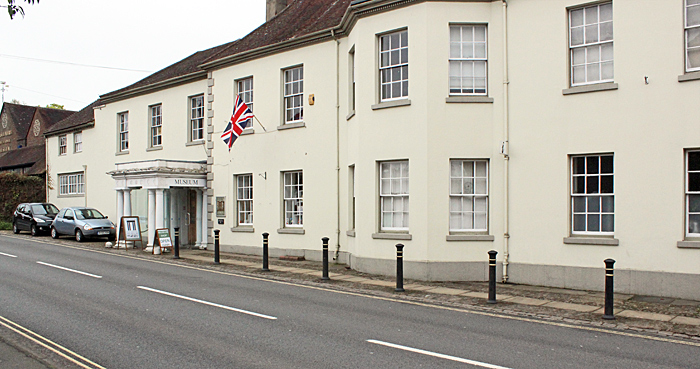 Haslemere Educational Museum
Haslemere Educational Museum
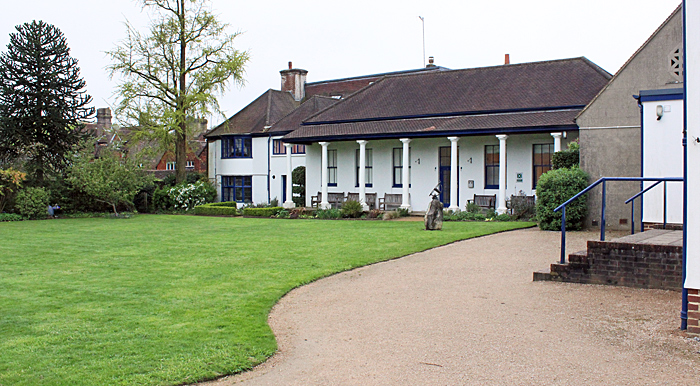 Garden behind the Museum
Garden behind the Museum
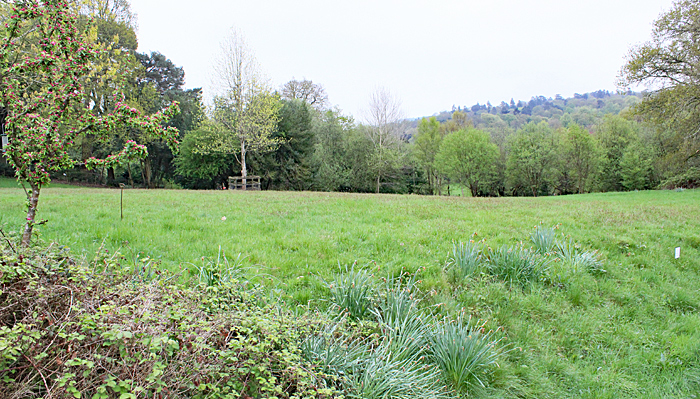 Meadow behind the Museum’s garden
Meadow behind the Museum’s garden
The Quekett display was set up in the Waverley Room on the first floor of the Museum, a good location because everyone going to the AGM in the Main Hall had to pass us.
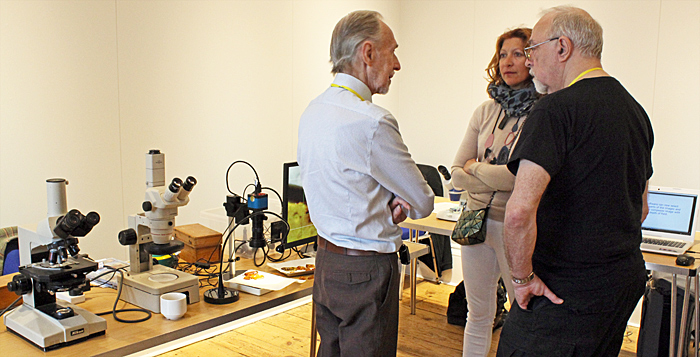 Dennis Fullwood and Paul Smith with an entomologist
Dennis Fullwood and Paul Smith with an entomologist
Dennis Fullwood brought his Nikon Labophot compound microscope, his Olympus SZ4045 stereomicroscope and his recently-acquired Chinese 14MP inspection camera displaying images on an Iiyama monitor.
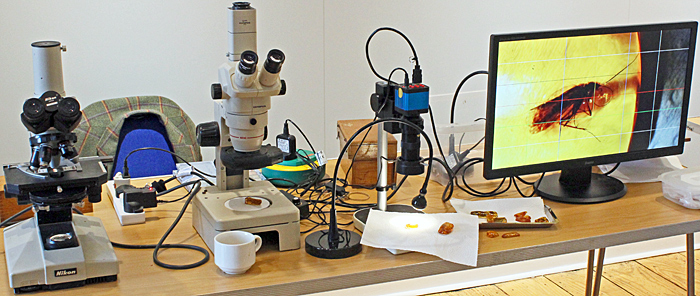 Dennis Fullwood’s exhibit
Dennis Fullwood’s exhibit
Dennis’s slides included ones by Clarke & Page, Richard Suter, M. C. Topping and Fred Enock.
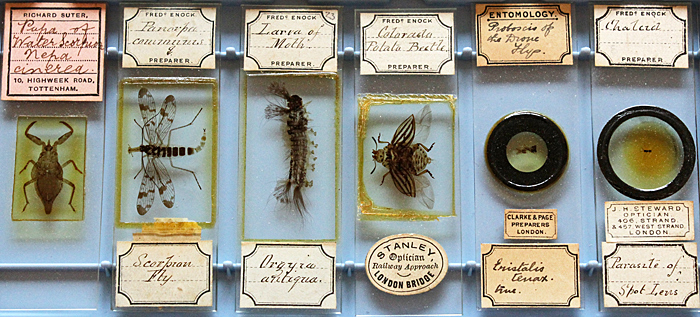 Antique slides of insects
Antique slides of insects
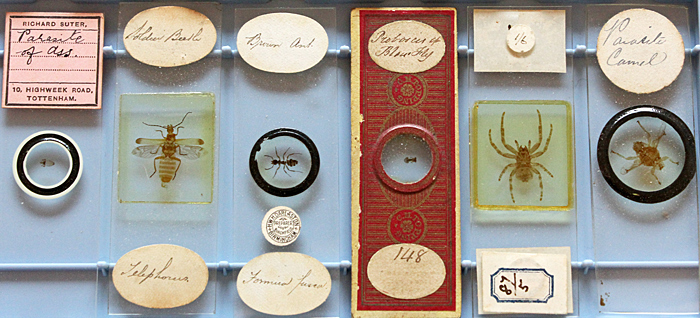 Antique slides of insects
Antique slides of insects
Dennis used the inspection camera to show insects in several pieces of polished amber from the Baltic, around 40 million years old.
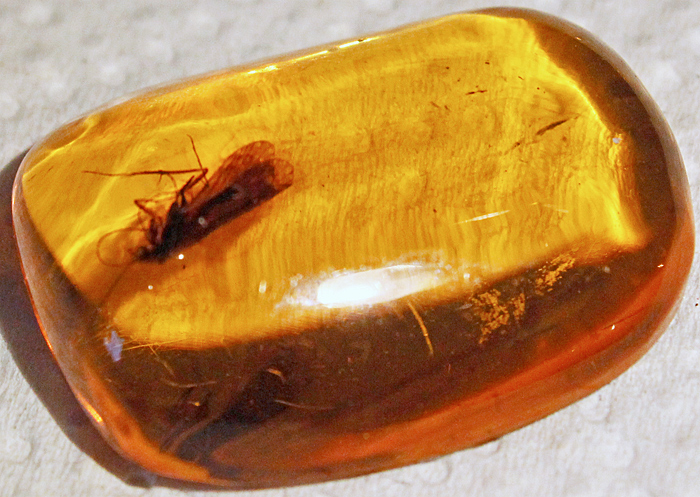 Insect in amber
Insect in amber
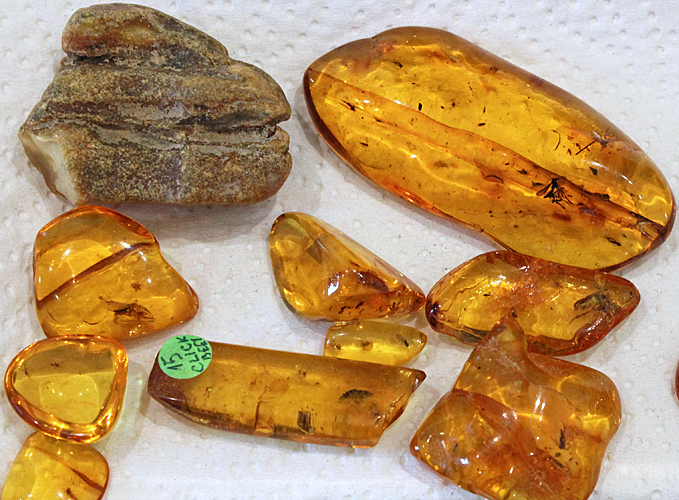 Raw and polished amber
Raw and polished amber
Paul Smith brought his Philip Harris stereomicroscope with top and bottom lighting powered by a rechargeable battery and some arthropods embedded in resin. An iridescent beetle showed up very well with top lighting.
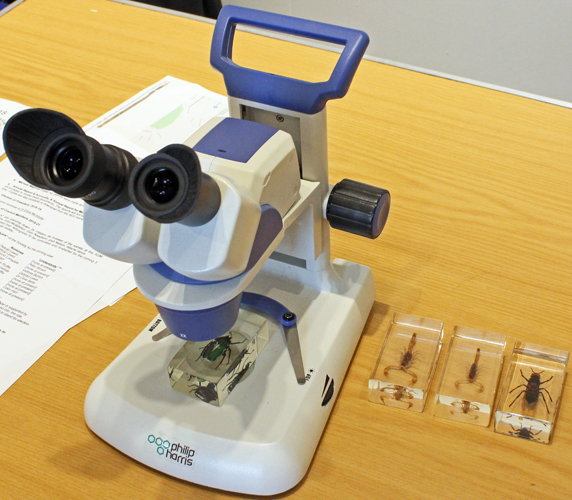 Paul Smith’s exhibit
Paul Smith’s exhibit
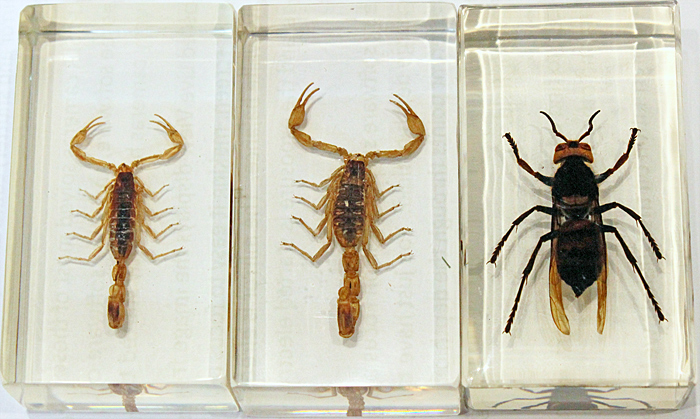 Arthropods in resin
Arthropods in resin
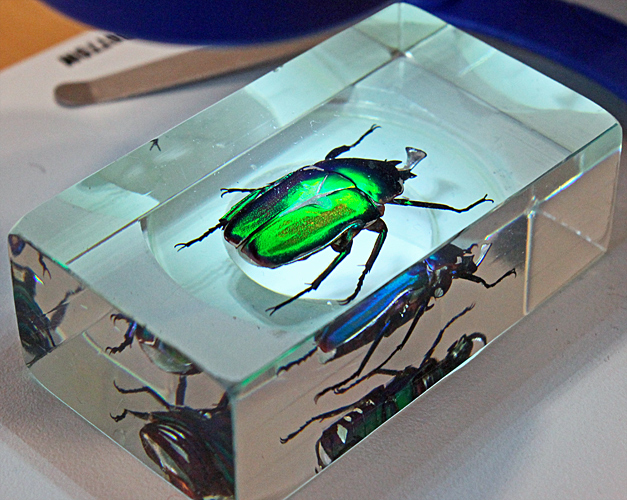 Iridescent beetle in resin
Iridescent beetle in resin
Alan Wood brought his trinocular Olympus CH-2 compound microscope, Canon EOS digital SLR camera and Lenovo laptop computer to show how easy it is to take photomicrographs using the free EOS Utility software. The image from the camera’s sensor is shown on the computer screen so that you can compose, focus, set white balance and adjust exposure. The camera’s mirror is up and its shutter is open, so there is no vibration.
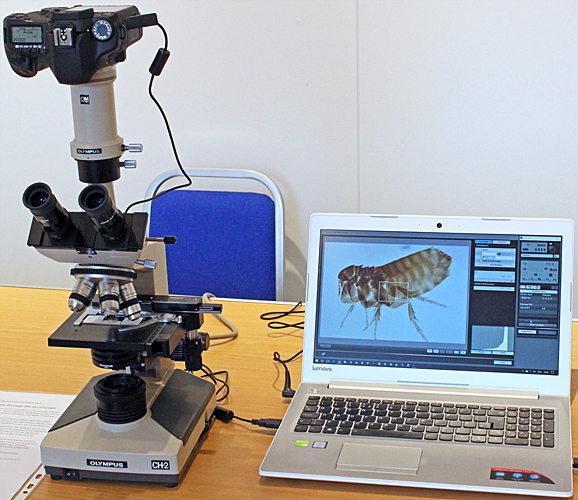 Alan Wood’s exhibit
Alan Wood’s exhibit
This slide of the European chicken flea (Ceratophyllus gallinae) was made by Quekett member Mike Smith:
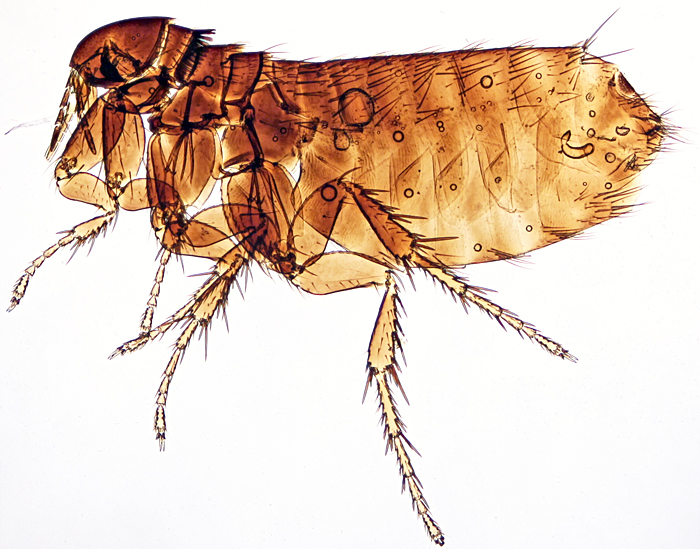 Female Ceratophyllus gallinae
Female Ceratophyllus gallinae
Commercial Philip Harris slide of housefly wing:
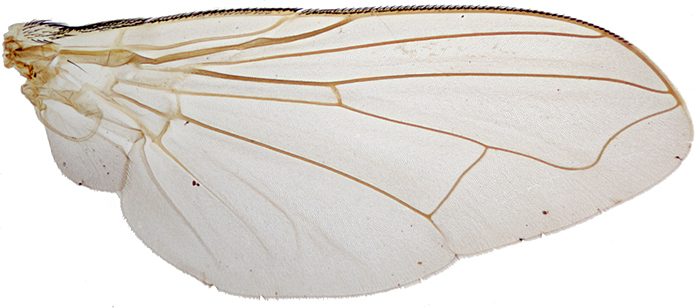 Wing of Musca domestica
Wing of Musca domestica
Commercial slide of honeybee worker 3rd leg (with lots of dirt in the mountant):
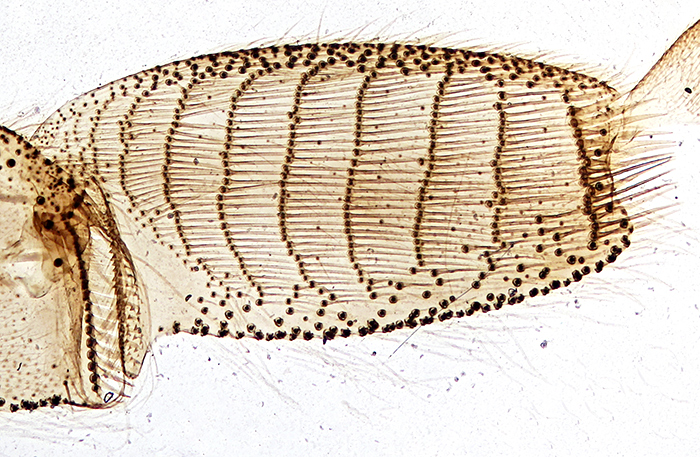 Honeybee pollen basket
Honeybee pollen basket
Although specimens mounted on microscope slides are very thin, objectives do not provide enough depth of field to get everything in focus. If you take a series of photographs focused at different depths through the subject, image stacking software can combine the sharpest parts of each image into a new composite image with good depth of field. Alan demonstrated stacking with a real-time recording of Zerene Stacker and a series of 83 images of the spotted-wing drosophila (Drosophila suzukii).
Click the arrow at bottom left to watch the video (4 minutes), click the symbol to the left of “vimeo” for full screen
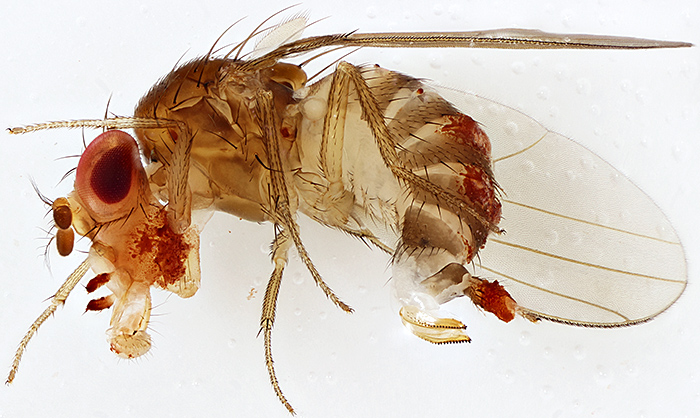 Female Drosophila suzukii (83 images combined with Zerene Stacker)
Female Drosophila suzukii (83 images combined with Zerene Stacker)
As usual when a group of enthusiasts get together, we had some interesting discussions. We didn’t know that astronomers also use image stacking, but they do not change the focus; their subjects are very faint so they take lots of photographs of the same subject and then stack them, and this provides more light for the subject and cancels out noise in the background. Erica McAlister (new president of the AES) told us about a great demonstration to show on a television; get a hungry dragonfly larva and introduce a bloodworm (Chironomid larva that contains haemoglobin) and when the dragonfly larva pounces the water turns red.
Also in the Waverley Room, Stephen Thomas was promoting the Phasmid Study Group, showing some spectacular specimens including Eurycantha calcarata and giving away oothecae to anyone wanting to rear their own. Stephen recommended a book, Rearing Stick and Leaf Insects by Ronald Baxter (ISBN 0951921932).
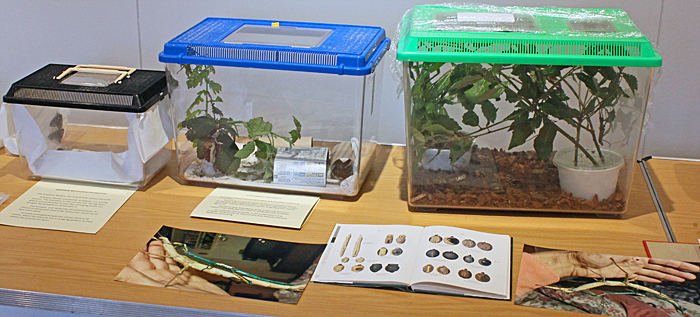 Live phasmids and silkmoths
Live phasmids and silkmoths
There were also cocoons and live adults of the emperor moth (Saturnia pavonia), the only British silkmoth. For anyone wanting to rear Indian stick insects (Carausius morosus), there were several boxes being given away, complete with rearing instructions.
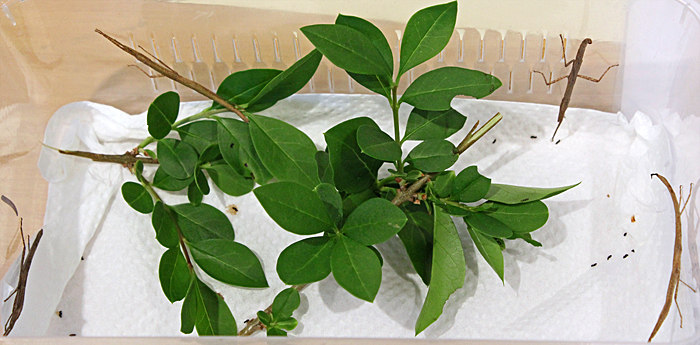 Indian stick insects (Caurausius morosus)
Indian stick insects (Caurausius morosus)
The AES had a display too, with their own books and journals and lots of material for members of the Bug Club.
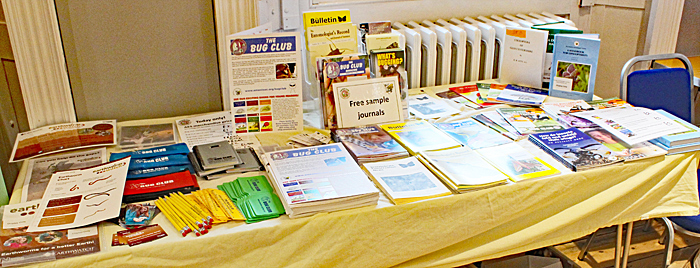 AES publications and merchandise
AES publications and merchandise
In the Main Hall, proceedings started with the AGM, followed after lunch by prize giving and 2 lectures, “Adventures with ants” by Gino Brignoli and “Aphids are fab!” by Simon Leather.
Report and photographs by Alan Wood

